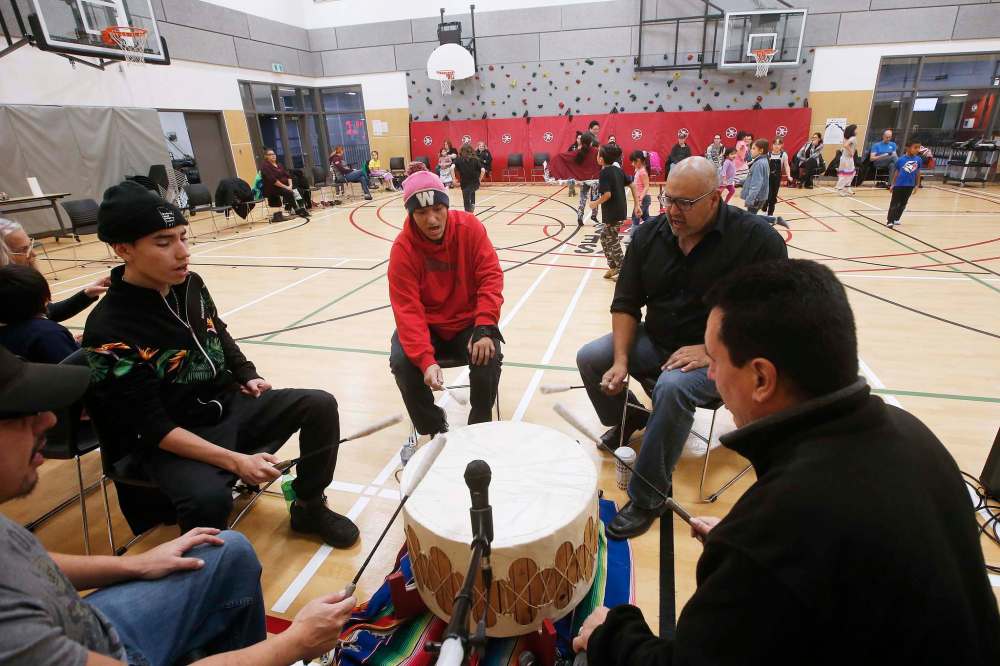Powwow club strengthens community
Tuesday nights at U of W are special for Indigenous dancers
Advertisement
Read this article for free:
or
Already have an account? Log in here »
To continue reading, please subscribe:
Monthly Digital Subscription
$0 for the first 4 weeks*
- Enjoy unlimited reading on winnipegfreepress.com
- Read the E-Edition, our digital replica newspaper
- Access News Break, our award-winning app
- Play interactive puzzles
*No charge for 4 weeks then price increases to the regular rate of $19.00 plus GST every four weeks. Offer available to new and qualified returning subscribers only. Cancel any time.
Monthly Digital Subscription
$4.75/week*
- Enjoy unlimited reading on winnipegfreepress.com
- Read the E-Edition, our digital replica newspaper
- Access News Break, our award-winning app
- Play interactive puzzles
*Billed as $19 plus GST every four weeks. Cancel any time.
To continue reading, please subscribe:
Add Free Press access to your Brandon Sun subscription for only an additional
$1 for the first 4 weeks*
*Your next subscription payment will increase by $1.00 and you will be charged $16.99 plus GST for four weeks. After four weeks, your payment will increase to $23.99 plus GST every four weeks.
Read unlimited articles for free today:
or
Already have an account? Log in here »
Hey there, time traveller!
This article was published 05/01/2020 (2171 days ago), so information in it may no longer be current.
At five years old, Winter Sinclair seems perfectly comfortable on the dance floor, twirling and moving to the beat of the drum, a sound she was familiar with long before she was born.
“I started coming when I was two months pregnant (because) I wanted her to get used to the drum sounds and powwow sounds,” recalls Felicia Sinclair, a neuroscience student at the University of Winnipeg.
“When I was younger, I was adopted out and disconnected from our culture and I wanted her to be connected to her culture.”
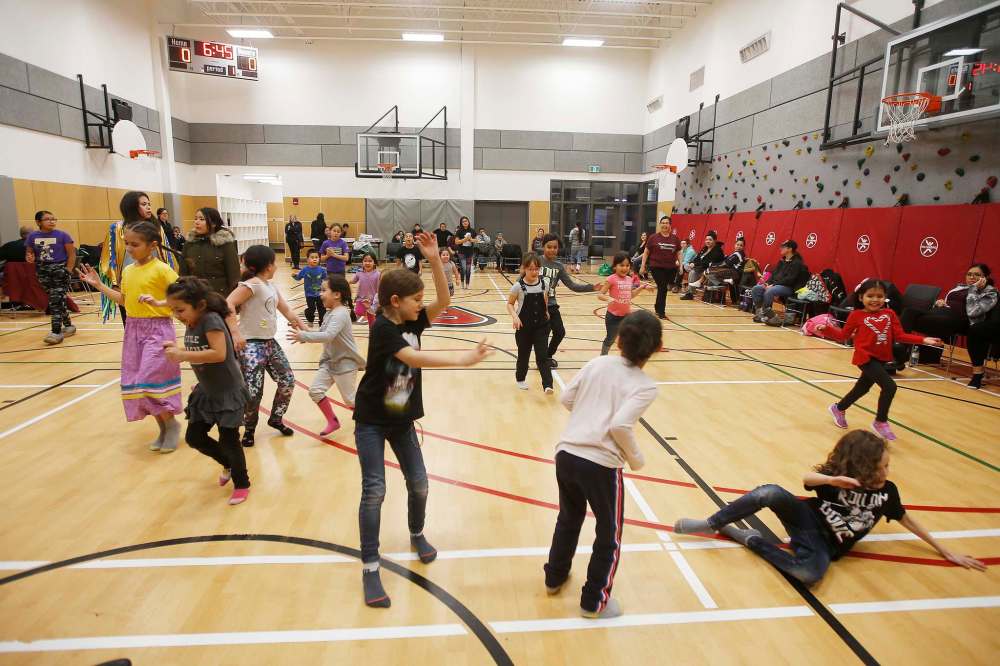
Every Tuesday evening, Felicia bundles up Winter for the short walk from their on-campus housing to the powwow club sponsored by the Wii Chiiwaakanak Learning Centre at the University of Winnipeg.
Meeting weekly in the second-floor community gym at the university’s Axworthy Health and RecPlex from mid-September until early June, with a break over the holidays, the club offers Indigenous and non-Indigenous people a chance to connect over traditional dances, no matter what level of experience they have, says leader Ray Stevenson, better known as CoCo.
Organized as a drop-in club, anyone from the community can attend free of charge for one evening or the whole season. As many as 200 people have shown up some evenings, says Stevenson.
“We have singers that show up and we have families, and everybody sings and dances,” he says.
The room begins to fill up before the 6 p.m. start, with parents dealing with boots and jackets at the perimeter of the gym while their children twirl and run in the middle.
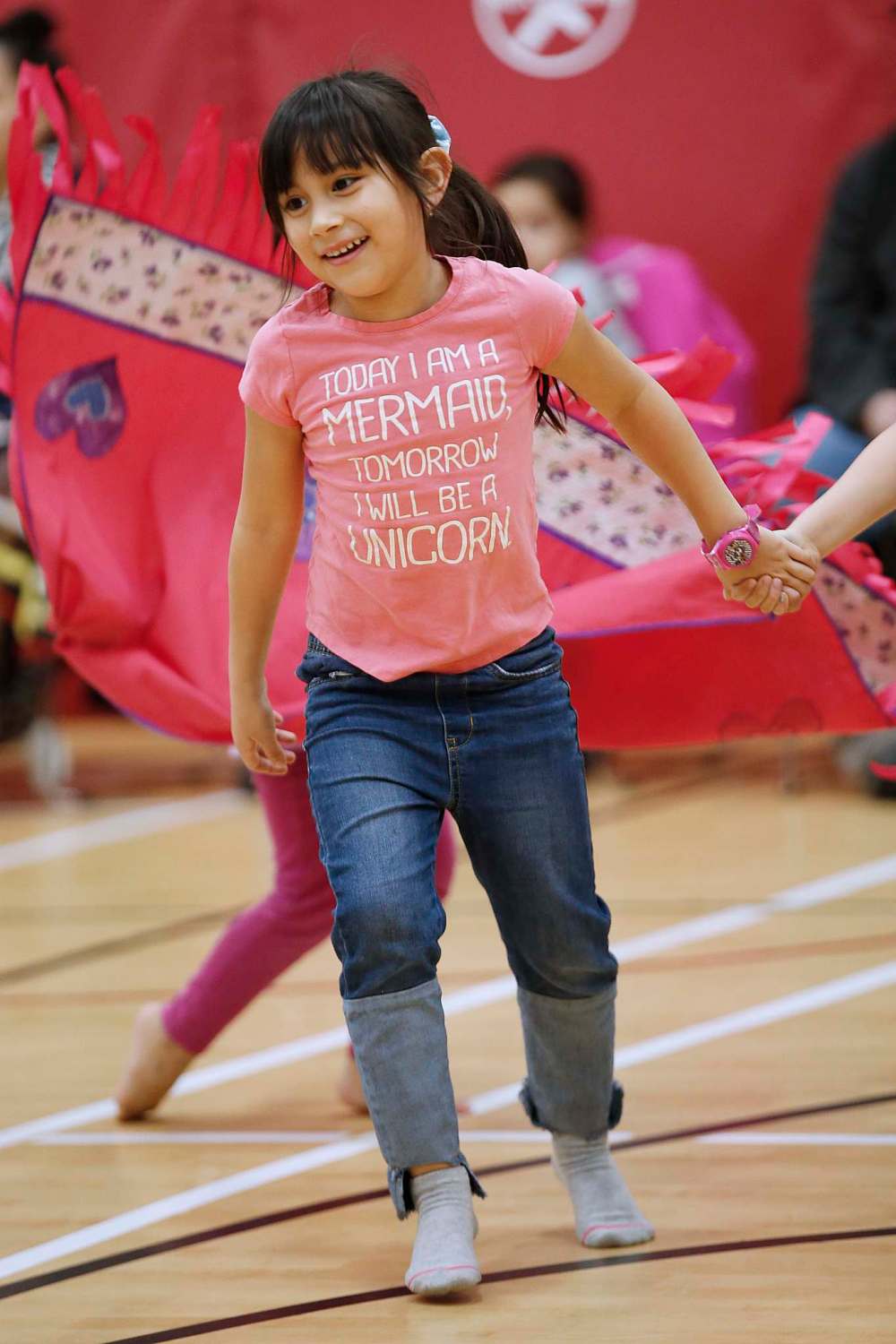
“It’s the drumming and the dancing, the meeting people,” explains Barbara Richard of why she brings her young daughter Azia to the Tuesday-evening club.
Her four-year-old loves to dance, enthusiastically swinging her pink shawl embellished with a purple heart to the beat of the drum.
“I do this with it,” she explains, demonstrating her moves with her child-sized shawl, handed down by another family.
“It gives her something to release some of her energy and at the same time, she’s experiencing her culture,” adds Richard of the benefits of the powwow club.
Although youngsters like Azia love dressing in powwow regalia, wearing it is optional at the club, says Stevenson, who has led the weekly dances with his wife Rhonda James for five years.
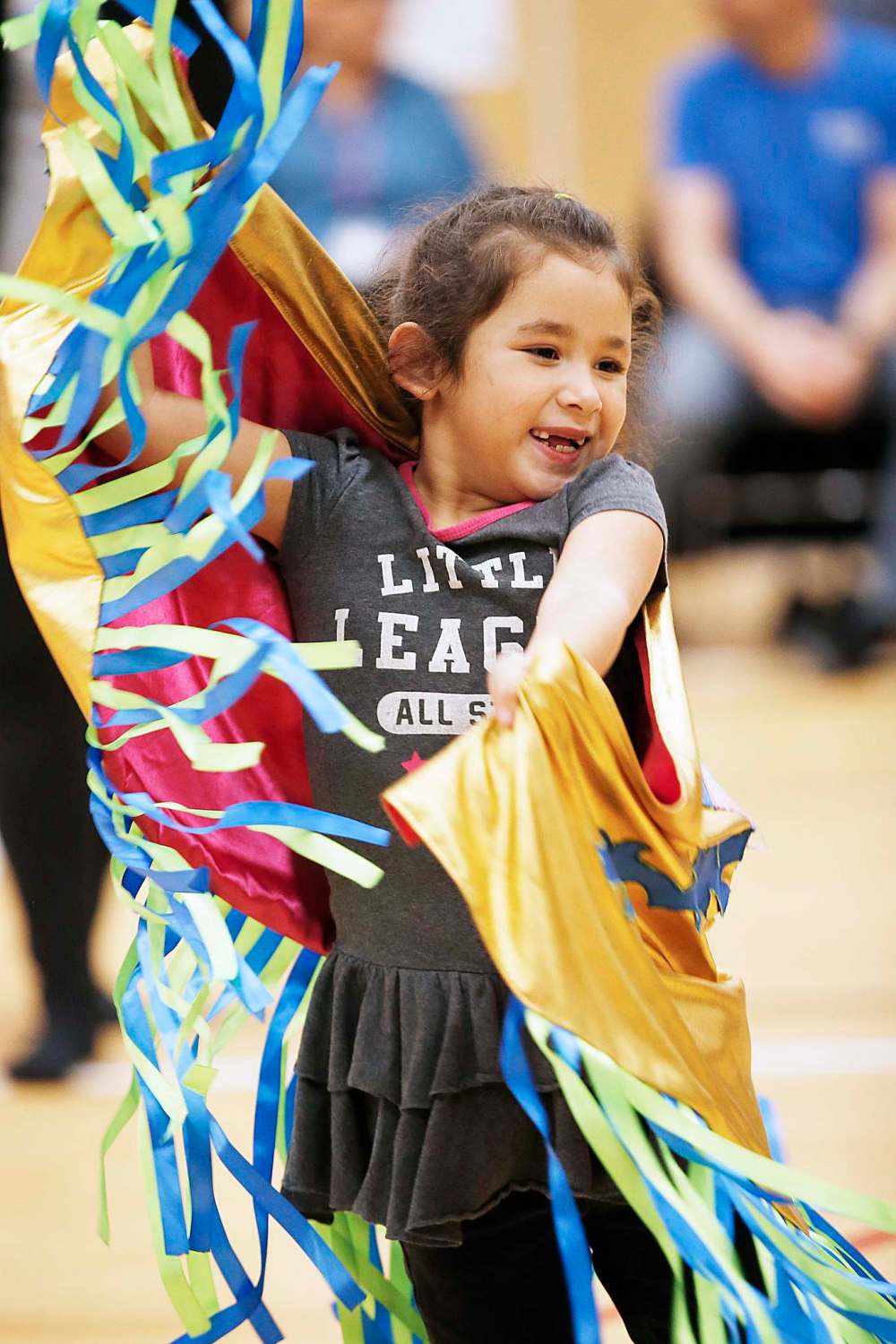
“Sometimes it can be (a barrier) because people don’t have it and they feel a bit uncomfortable” about not wearing regalia, he says.
Beaded moccasins cost at least $200, and a full set of regalia can run into the thousands of dollars, says Stevenson.
Some families hand down regalia from one child to another or to others in the club, and others learn to make their own. Dancer Terry Gardner dealt with the high cost of regalia by making his own knee-high fully beaded moccasins, featuring an eight-pointed star, a process that took him six weeks.
The 25-year-old two-spirit dancer attends the club as often as possible, sharing his expertise and love of dancing with young children attending.
“I dance and the children watch,” he says from the sidelines before heading back to the dance floor to demonstrate some steps to younger dancers.
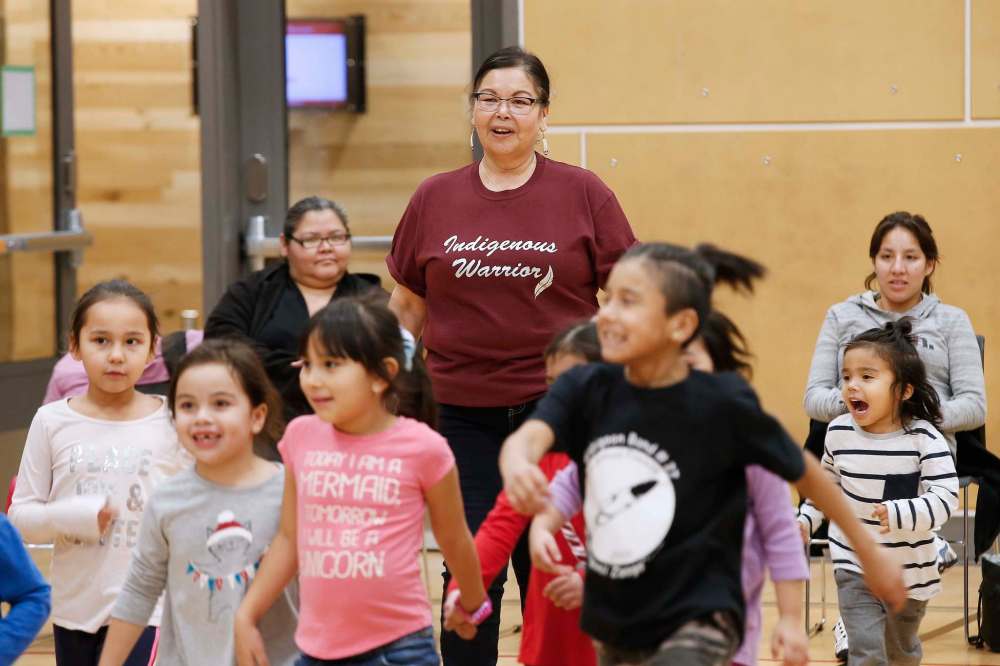
Since he wears women’s regalia on the dance floor, powwows provide Gardner with a way to express his two-spirit identity, something he says is gaining a resurgence in Indigenous culture.
“It was taken away for a long time and it’s coming back,” he says.
“We’re tired of hiding who we are. We’re all created by one creator.”
Gardner’s father Rick Ballantyne says the club allows people to celebrate their identity as Indigenous people as they become familiar with dances and what they represent.
“I think they develop a feeling of belonging and curiosity,” he says.
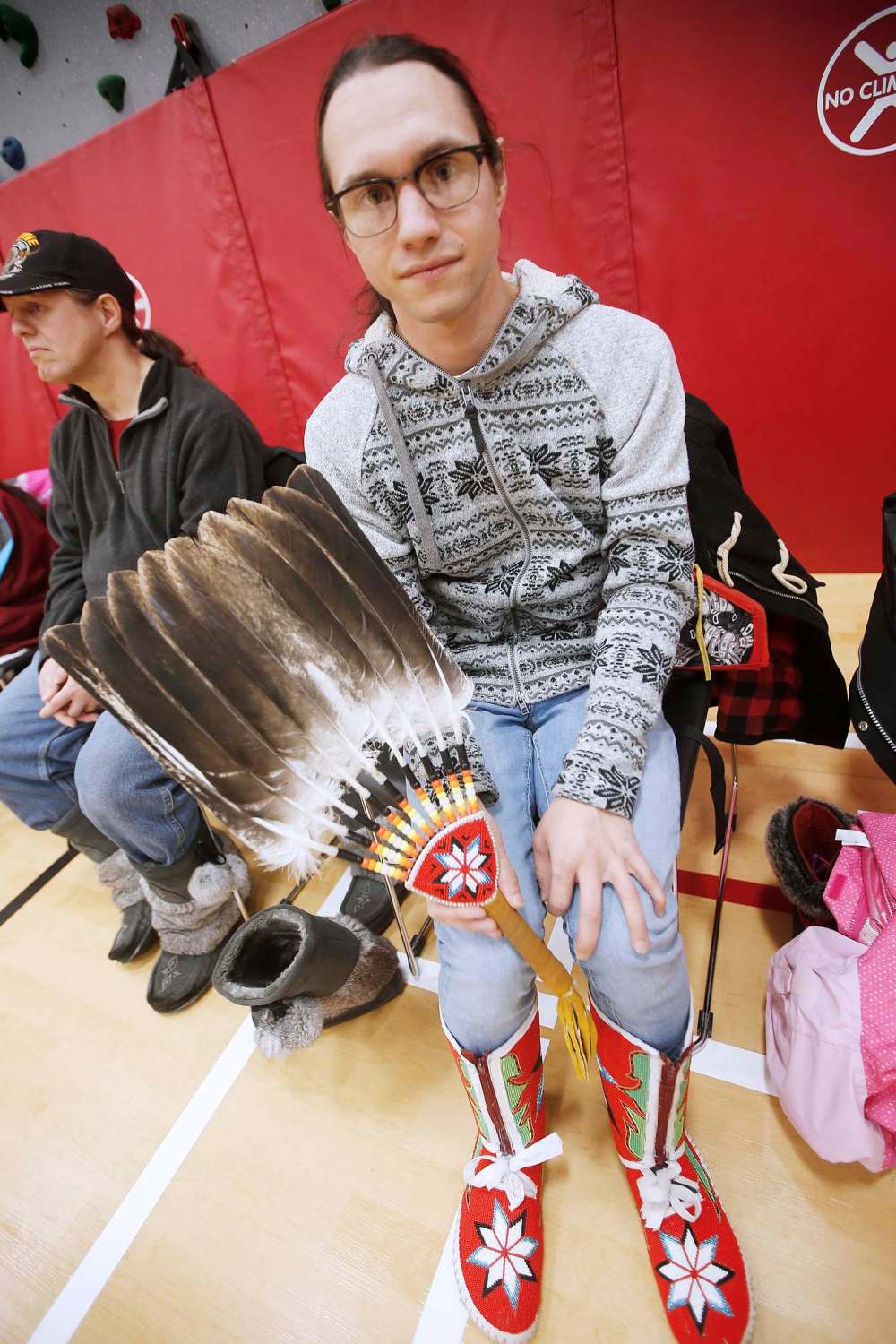
“They get a lot of teachings at a young age.”
That’s the reason Erika Traverse, 39, keeps bringing her seven children to the powwow, including her infant daughter, the third baby she’s brought to the club. The club gives the family a chance to participate in an event together, get some exercise, and to experience their Indigenous culture.
“Being at the powwow makes me calm,” she says as her five-year-old daughter Electrice dances with a green and blue fringed shawl, lined in pink.
“I grew up on the powwow trail. It’s something I want my kids to feel.”
She also wants her children, ranging in age from seven months to 19, to feel strong, resilient and Indigenous, a slogan emblazoned on her T-shirt.
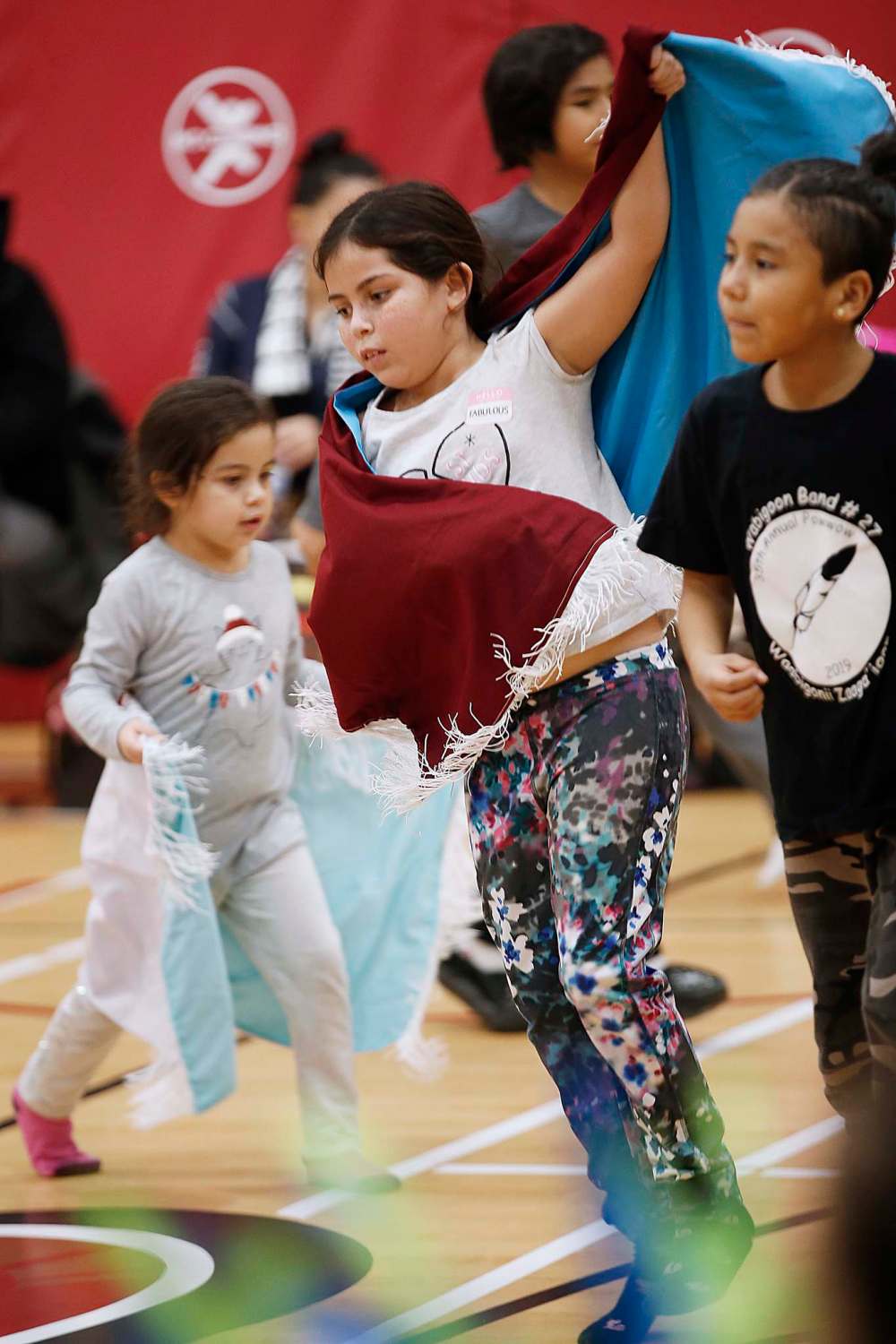
“That’s the way I feel. I’m proud of my heritage.” says the member of Shoal Lake 39 First Nation before rushing off to the dance floor to join her two-year-old son.
That’s the way the powwow club operates, pulling people off their seats at the edge of the gym and onto the floor as the drums slow or speed up, says Stevenson of the pace of the evening.
Sometimes he divides people into smaller groups for step-by-step instruction, but mostly the club is a place where people learn from each other.
“The younger kids see the older kids and adults come to practice and they watch,” he says.
As well as encouraging dancing among the participants, the club also introduces the young dancers to the university setting, adds James.
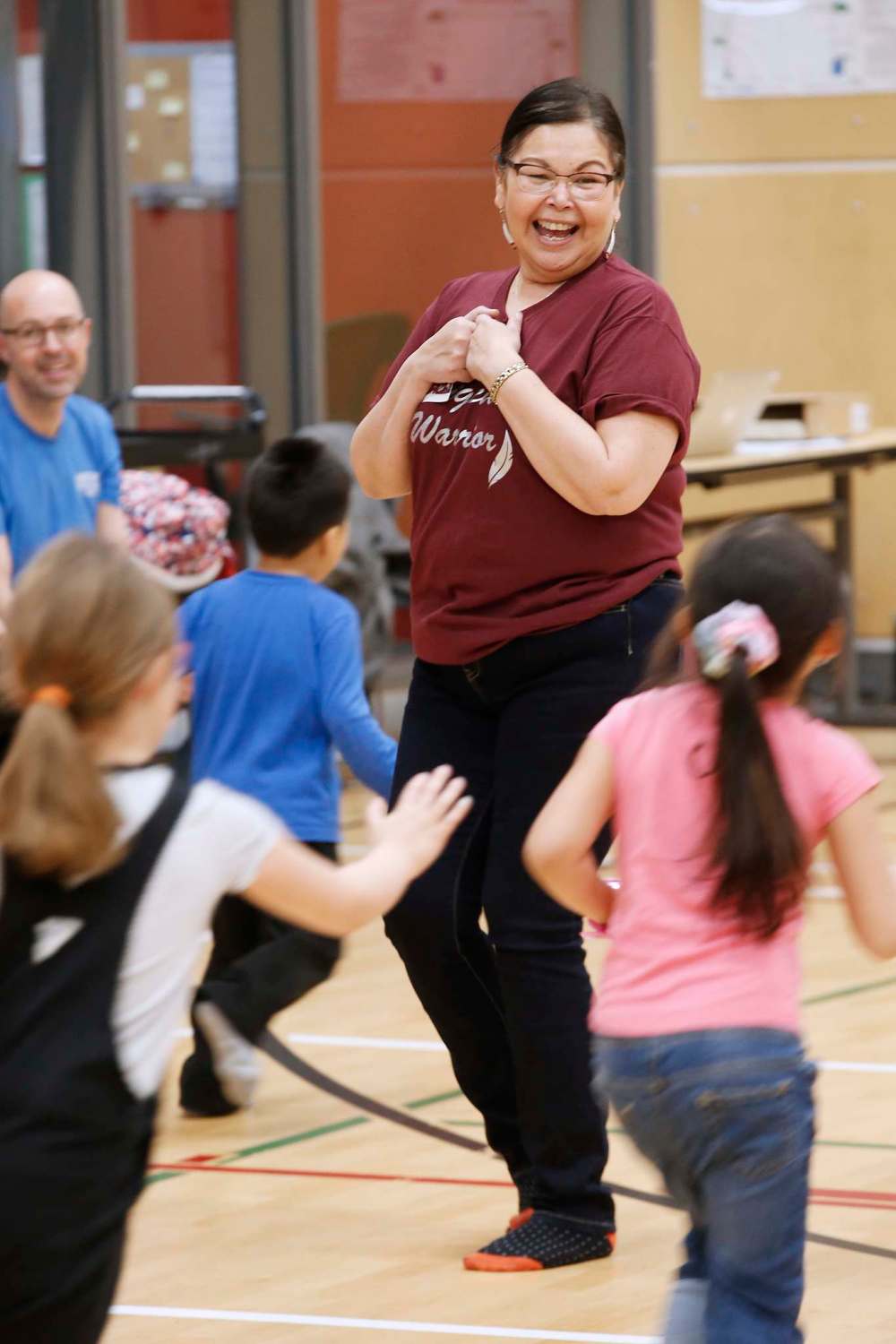
“It brings exposure for families to be on the campus, for the kids to see it’s not a mystery to see a university,” she says.
For Felicia Sinclair and her daughter Winter, their Tuesday night outing offers them the benefit of some shared physical activity, time with other families, and the chance to move to the beat of the drum, with the added advantage of being close to home.
“She gets to be around other Indigenous children in a positive environment and learn about her culture and it keeps us connected to our community,” says Sinclair.
brenda@suderman.com

Brenda Suderman has been a columnist in the Saturday paper since 2000, first writing about family entertainment, and about faith and religion since 2006.
Our newsroom depends on a growing audience of readers to power our journalism. If you are not a paid reader, please consider becoming a subscriber.
Our newsroom depends on its audience of readers to power our journalism. Thank you for your support.


